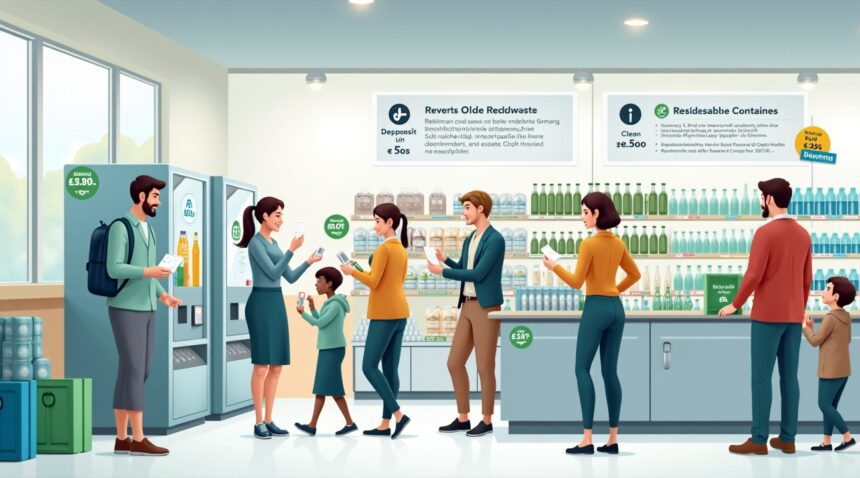Germany’s bottle return program, known as the Pfandsystem, has earned global recognition as the world’s most successful deposit scheme, boasting a remarkable 98% return rate on eligible beverage containers.
Key Takeaways
- Widespread Infrastructure: Germany maintains approximately 135,000 return locations, including supermarkets, convenience stores, and automated reverse vending machines, making it easy to return bottles across the country.
- High Return Rates: The system achieves an exceptional 98–99% return rate for drink containers, significantly reducing litter and keeping millions of bottles in circulation instead of becoming waste.
- Standard Deposit Values: Most single-use plastic bottles, cans, and glass bottles carry a €0.25 deposit. Refillable glass bottles range from €0.08 to €0.50 depending on the type.
- Store Requirements: Retailers with over 200 square meters in retail space that sell beverages must accept returns of all corresponding container types, ensuring consistent availability of return services.
- Environmental Impact: Glass bottles can be reused up to 50 times, and plastic bottles 10–12 times, with 42% of beverages in Germany sold in refillable containers, greatly reducing environmental impact.
How the Pfandsystem Works
The Pfandsystem exemplifies circular economy principles. When consumers purchase a drink, they pay a small deposit upfront for the container. This deposit provides an immediate financial incentive to return the empty container properly instead of treating it as waste.
Reverse vending machines dominate bottle return infrastructure across the country. These machines, typically found in supermarkets, scan the containers’ barcodes, verify eligibility, and then issue instant cash refunds or vouchers for the refunded amount. Return opportunities also exist at gas stations, kiosks, and smaller retailers.
Deposit Amounts and Container Types
- Single-use bottles and cans: A uniform €0.25 deposit regardless of whether the material is plastic, glass, or metal.
- Refillable containers: Deposits vary between €0.08 and €0.50, depending on size and container type. Beer bottles often require just €0.08, while wine bottles carry a €0.02–€0.03 deposit.
Retailer Participation
German law mandates that any retailer with over 200 square meters of space must accept returned beverage containers that correspond to what they sell. This requirement ensures that consumers can always return empties to stores where they made their purchases, preserving the system’s convenience and efficiency.
Environmental and Economic Benefits
One of the most compelling advantages of the Pfandsystem lies in its environmental sustainability. Glass bottles can endure up to 50 reuse cycles, while plastic bottles last for 10–12 refills before being recycled. This remarkable lifecycle reduces raw material extraction and lowers energy usage.
Collection and processing operations drive significant economic activity. Beverage producers reclaim clean containers for reuse or recycle them into new packaging. This closed-loop model reduces virgin material consumption, strengthens local recycling industries, and provides employment throughout the supply chain.
Public Reception and Success
Consumer compliance remains high due to the system’s simplicity, financial incentive, and nearly universal infrastructure. With return hubs available in almost every corner of Germany, the Pfandsystem enables convenient participation for all citizens. The immediate reward for returning empties reinforces responsible habits across generations.
Germany’s bottle deposit system stands as a global benchmark in waste-reduction efforts. Countries across Europe and beyond have taken interest in replicating this model, recognizing its synergy of environmental responsibility, economic feasibility, and consumer engagement.
With its high return rates, robust infrastructure, and proven long-term success, the Pfandsystem remains a shining example of sustainable design in a modern economy.
Germany’s Pfandsystem Achieves 98% Return Rate Making It the World’s Most Successful Deposit Scheme
Germany’s deposit return scheme, known as the Pfandsystem, stands as the world’s largest and most successful program of its kind. This impressive system achieves an extraordinary 98% return rate on eligible single-use drink containers, setting a global benchmark that other countries struggle to match. The scheme’s remarkable success stems from its comprehensive infrastructure and widespread acceptance among consumers who’ve embraced the financial incentive to return their containers.
Comprehensive Infrastructure Drives Success
Deutsche Pfandsystem GmbH (DPG) operates this extensive network through joint ownership by trade associations and the beverage industry. The company has established approximately 135,000 return locations across Germany, creating an incredibly dense network that makes returning bottles convenient for virtually everyone. Supermarkets, convenience stores, and specialized return stations form the backbone of this system, ensuring consumers never have to travel far to return their containers.
The infrastructure combines modern technology with traditional methods to maximize accessibility. About 25% of return locations feature sophisticated reverse vending machines (RVMs) that automatically sort and process containers, while the remaining 75% rely on manual return methods. This dual approach ensures the system accommodates different business sizes and customer preferences, from large supermarket chains to smaller neighborhood stores.
Record-Breaking Return Rates Transform Waste Management
The system’s efficiency translates into return rates of nearly 98-99% for all drink containers, a figure that demonstrates the program’s extraordinary effectiveness. These exceptional rates significantly reduce litter throughout German cities and countryside, creating cleaner public spaces that benefit everyone. The environmental impact extends beyond aesthetics, as the system conserves valuable resources by ensuring containers enter the recycling stream rather than ending up in landfills or as environmental waste.
The financial incentive structure encourages consistent participation across all demographic groups. Consumers receive immediate cash back when they return containers, creating a direct economic benefit that reinforces positive behavior. This immediate reward system proves more effective than programs relying solely on environmental consciousness or regulatory compliance.
The Pfandsystem’s success has caught international attention, with countries worldwide studying Germany’s model for potential implementation. The program demonstrates how combining convenient infrastructure with financial incentives can achieve environmental goals while maintaining consumer satisfaction. The system’s ability to process millions of containers annually while maintaining such high return rates showcases the potential for effective circular economy principles.
Germany’s approach proves that deposit return schemes can operate at massive scale without sacrificing efficiency. The collaborative ownership structure between trade associations and beverage industry stakeholders ensures adequate funding while distributing operational responsibilities across multiple parties. This partnership model creates stability and long-term commitment that individual companies or government agencies might struggle to maintain independently.
If you’re interested in seeing how the Pfandsystem operates in practice, you may find the following video informative:
https://www.youtube.com/watch?v=mEJvddwmW6k
How to Return Bottles and Get Your Money Back
Returning bottles in Germany operates through a simple deposit system called Pfand, where consumers pay an additional charge at purchase that gets refunded when they bring back empty containers. The deposit amount appears clearly on price tags throughout stores, making it easy to identify which products participate in the program.
Step-by-Step Return Process
Before heading to the store, I recommend preparing bottles properly to ensure smooth processing:
- Rinse containers thoroughly to remove any residue or sticky substances
- Remove caps and lids when required (plastic bottles typically need caps removed)
- Keep containers intact without crushing or damaging them
- Preserve all barcodes in readable condition
- Look for the DPG logo to confirm deposit eligibility
Most supermarkets feature reverse vending machines (RVMs) that automatically scan and process returned containers. These machines read the barcode, verify deposit eligibility, and dispense a receipt showing the refund amount. Customers can then exchange this voucher for cash at the checkout or apply the credit against their grocery purchases.
For stores without automated systems, manual return points allow staff to process returns directly. The process remains straightforward—present clean, undamaged containers and receive immediate payment or store credit.
The barcode serves as the critical identifier for deposit-eligible containers. Damaged, removed, or unreadable barcodes prevent successful processing and void refund eligibility. Similarly, crushed containers often can’t be scanned properly, resulting in rejected returns.
Container eligibility varies significantly across product categories. While most beverage bottles and cans qualify for deposits, several important exceptions exist. Wine bottles, spirits containers, and certain imported products fall outside the deposit system. Imported containers without German deposit markings won’t qualify for refunds, even if they appear similar to eligible products.
The DPG logo appears on qualifying containers alongside the barcode, serving as a visual confirmation of deposit participation. This marking system helps consumers identify which purchases include refundable deposits and which products they can return later.
Store policies generally require returns at locations selling similar products, though most major supermarket chains accept containers regardless of original purchase location. This flexibility makes the system convenient for regular shoppers who frequent different stores.
Processing typically happens quickly at RVMs, with most machines completing transactions within seconds per container. However, peak shopping times may create queues at popular return stations. Planning visits during off-peak hours often results in faster service.
Receipt vouchers contain expiration dates, usually valid for several months after issuance. Checking expiration dates prevents loss of deposit refunds due to forgotten vouchers. Some stores allow immediate cash redemption at customer service counters, while others require voucher use during checkout purchases.
The system encourages environmental responsibility while providing financial incentives for proper container disposal. Each returned bottle or can gets cleaned, processed, and reused in manufacturing new containers, creating a sustainable recycling loop that benefits both consumers and the environment.
Understanding these procedures makes bottle returns efficient and profitable for regular shoppers. The combination of environmental benefits and cash refunds creates a win-win situation that supports both personal finances and ecological sustainability throughout German retail systems.
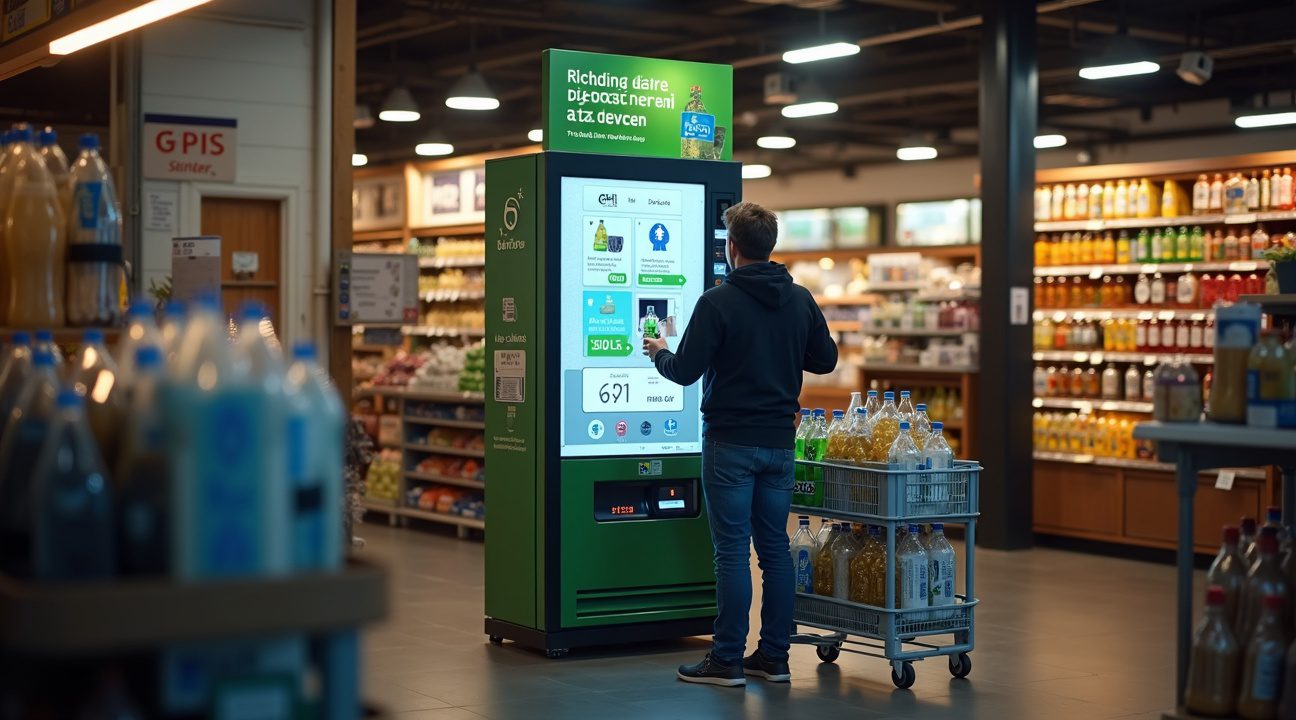
Deposit Amounts: What Each Container Type Is Worth
Understanding deposit values helps maximize returns when collecting empty containers throughout daily life. I’ve found that knowing these amounts beforehand makes the entire process more rewarding and efficient.
Standard Deposit Values for Different Container Types
Single-use containers offer the most straightforward deposit structure across Germany’s bottle return system. These containers include several common types:
- Plastic bottles (PET) carry a €0.25 deposit regardless of size
- Metal cans made from aluminum or tinplate also provide €0.25 each
- Single-use glass bottles return €0.25 per container
Refillable glass bottles operate under a different pricing structure that reflects their reusable nature. These deposits typically range from €0.08 to €0.50 per bottle, depending on the specific bottle type and manufacturer. The lower deposit reflects the expectation that these containers will be cleaned and refilled multiple times.
Crate systems add another layer to the deposit structure:
- Complete refillable crate: €1.50 deposit
- Split crate: €0.75 deposit
These crates protect bottles during transport and storage, making them valuable components of the entire system.
Container eligibility spans a wide range of sizes and materials. Glass bottles ranging from 100 milliliters to 3 liters qualify for deposits, accommodating everything from small juice bottles to large beverage containers. This comprehensive size range ensures that most beverage containers purchased in Germany participate in the deposit system.
Industry experts have proposed significant changes to encourage better return habits, particularly in urban environments where bottles face higher disposal rates. Current discussions center on increasing refillable glass bottle deposits from the current €0.08 minimum to as much as €0.80. This dramatic increase aims to reduce street litter and improve collection rates in cities where convenience often trumps environmental responsibility.
The proposed increase would make refillable glass bottles nearly as valuable as single-use containers, potentially shifting consumer behavior significantly. Urban areas, where bottles are more likely to end up in regular trash rather than return systems, could see substantial improvements in collection rates with such a change.
These deposit amounts create clear financial incentives for participation while supporting Germany’s circular economy goals. The system’s effectiveness stems from making returns financially worthwhile while keeping deposits low enough to avoid discouraging initial purchases.
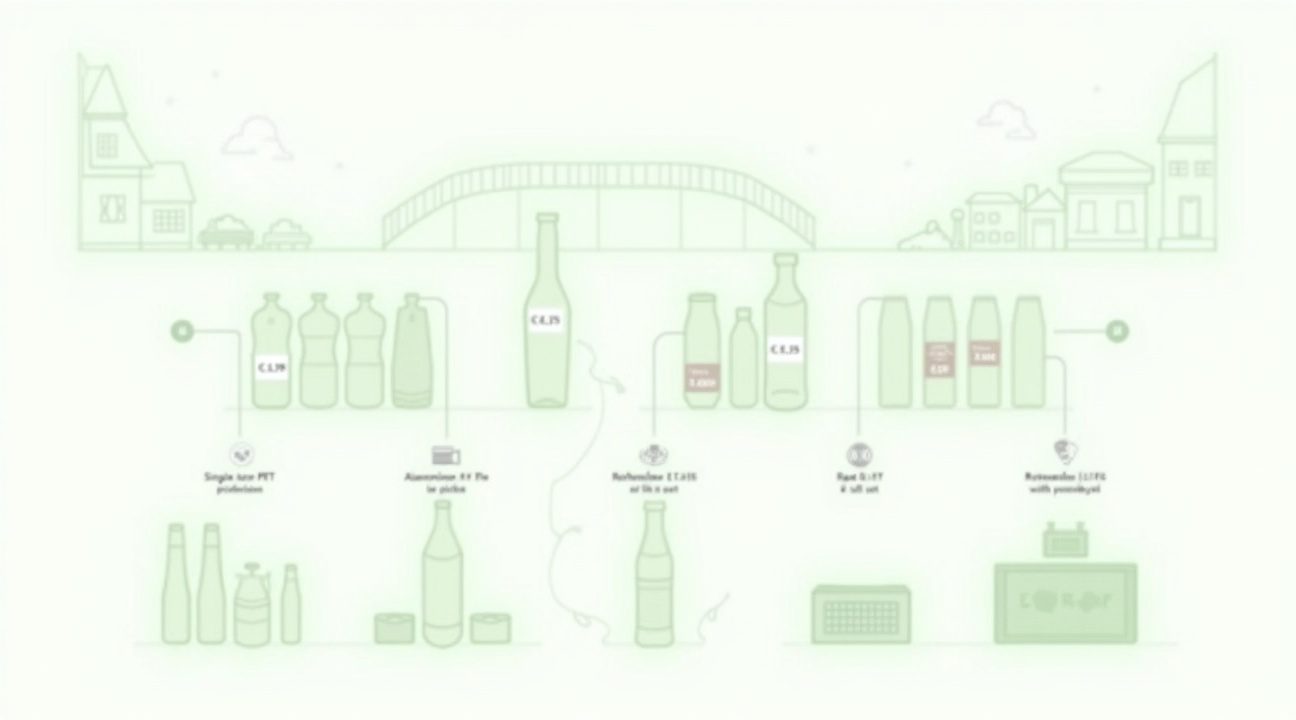
Which Stores Must Accept Returns and How the System Works
I find Germany’s bottle return system remarkably straightforward once you understand the underlying mechanics. The country operates under a return-to-retail model that creates clear obligations for retailers while ensuring smooth financial transactions throughout the supply chain.
Store Requirements and Size Thresholds
Large retailers bear the primary responsibility for accepting returns. Any store measuring 200 square meters or larger that sells eligible beverages must accept returns of all beverage container types they offer. This means your local supermarket can’t pick and choose which bottles to accept – if they sell it, they must take it back.
I’ve observed that this size threshold effectively captures most major grocery chains, discount stores, and beverage retailers while exempting smaller convenience shops and specialty stores. The system recognizes that smaller retailers lack the space and infrastructure needed for efficient bottle processing, though many voluntarily participate to attract customers.
When you approach the return machines or service counter, stores provide refunds either as cash or store credit, depending on their individual policies. Most major chains offer both options, giving customers flexibility in how they receive their deposit refund.
The Role of Manufacturers and Importers
Container manufacturers and importers play a crucial role behind the scenes. They must:
- Register each container type with the system administrator
- Pay required administrative fees
- Ensure proper labeling before products reach store shelves
This registration process maintains the integrity of the entire system by preventing unauthorized containers from entering circulation.
Financial Flow and Deposit Circulation
Retailers advance deposit payments to their suppliers when purchasing inventory, then recover these amounts when returned containers get processed through the system. This creates a continuous financial loop that keeps deposits flowing properly throughout the supply chain without creating cash flow problems for any participants.
Container Labels and DPG Symbols
The containers themselves must display two essential elements for acceptance:
- The distinctive DPG deposit symbol
- An official barcode
I always check for these markers before purchasing drinks, as containers lacking either element won’t qualify for deposit refunds. The DPG symbol appears as a circular logo, while the barcode enables automated processing through return machines.
Processing Technology and Accuracy
Processing happens through sophisticated reverse vending machines that scan barcodes, verify authenticity, and sort containers by material type. These machines reject any bottles or cans that don’t match their database, ensuring only legitimate deposit containers receive refunds.
How Retailers Are Reimbursed
The system’s financial architecture prevents retailers from losing money on returns. When they send collected containers back to distributors or recycling facilities, they receive credit for the deposits they’ve paid out to customers. This closed-loop approach means deposits continuously circulate rather than creating financial drains on any single participant.
DPG Oversight and Administration
Administrative oversight comes from DPG, the central clearing house that manages container registration, fee collection, and system coordination. They maintain the databases that power return machines and ensure all participants follow established protocols.
Challenges for Non-German Containers
I’ve noticed that some international visitors initially struggle with the system because not all containers qualify for returns. Products imported from other EU countries without proper German registration won’t trigger refunds, even if they appear similar to eligible containers. This emphasizes the importance of checking for the DPG symbol before making purchases.
Return-to-Retail Convenience and System Support
The return-to-retail model creates convenience for consumers while distributing processing costs across the entire beverage industry. Unlike centralized collection systems used elsewhere, Germany’s approach leverages existing retail infrastructure to maximize accessibility and efficiency.
Store employees receive training on manual processing procedures for situations when machines malfunction or can’t accept certain containers. This backup system ensures customers can still return eligible bottles even during technical difficulties, maintaining the system’s reliability and public trust.
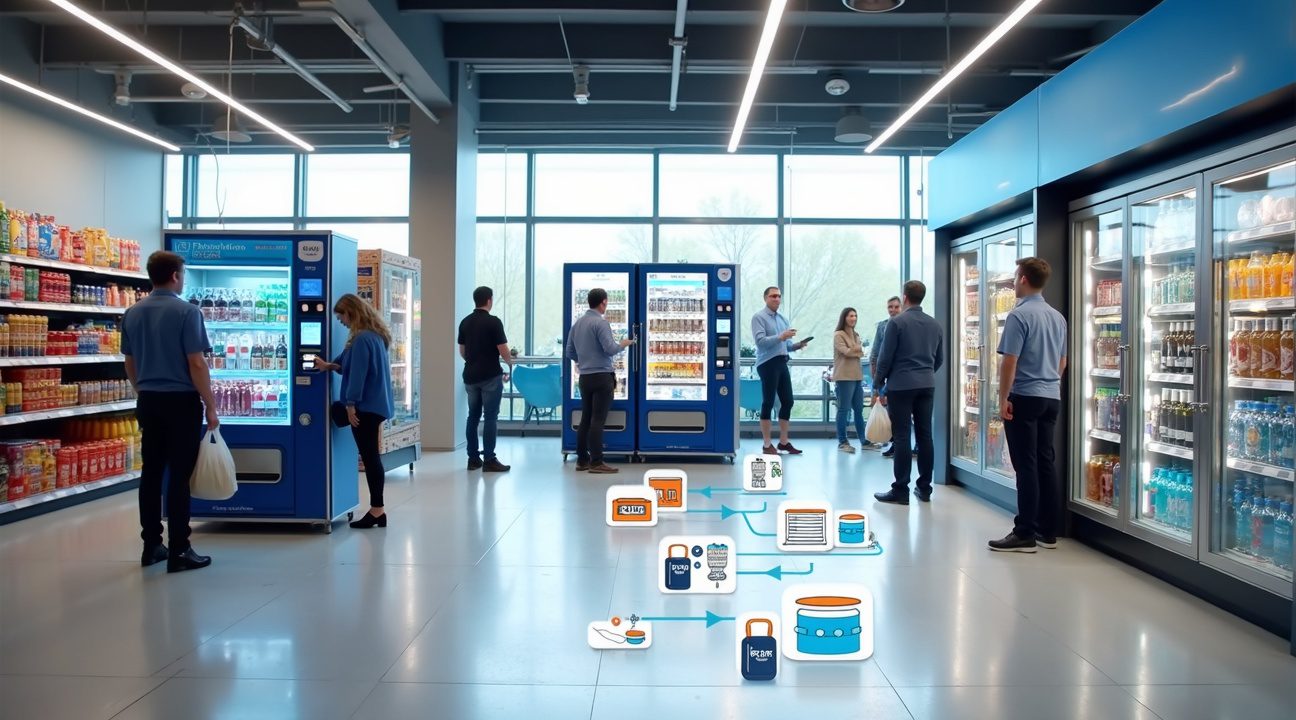
Environmental Benefits: Reuse and Recycling Impact
Germany’s Pfandsystem creates remarkable environmental advantages through its systematic approach to bottle reuse and recycling. I’ve witnessed firsthand how this deposit system transforms waste management by keeping containers in continuous circulation rather than allowing them to become single-use waste.
Impressive Reuse Cycles
The numbers behind the Pfandsystem reveal its environmental strength. Glass bottles endure up to 50 reuse cycles before requiring recycling, while plastic bottles maintain functionality through 10 to 12 reuse cycles. This extended material lifecycle dramatically reduces the demand for new bottle production, cutting down on raw material extraction and manufacturing energy consumption.
Currently, about 42% of beverages sold in Germany come packaged in refillable containers. This substantial market share demonstrates consumer acceptance and the system’s economic viability. Lower deposit fees for refillable containers compared to single-use alternatives encourage both retailers and consumers to choose the more sustainable option.
Outstanding Return Rates and Expanding Coverage
The system achieves return rates approaching 98-99%, creating an almost closed-loop cycle that minimizes environmental leakage. These exceptional rates translate directly into reduced litter across German landscapes and urban areas. Streets, parks, and waterways benefit from fewer discarded bottles, while resource conservation reaches impressive levels through this high-participation model.
Germany continues expanding the Pfandsystem’s environmental impact through legislative updates. January 2022 brought coverage to previously exempt beverage types, broadening the system’s reach. Additional expansions are scheduled, with milk-based drinks in single-use plastic packaging joining the program starting in 2024.
I find the environmental mathematics compelling: when millions of bottles avoid landfills and incineration through multiple reuse cycles, the cumulative impact spans:
- Reduced carbon emissions
- Decreased plastic pollution
- Conservation of natural resources
The system essentially transforms what would traditionally become waste into valuable resources that continue serving their intended purpose.
Resource conservation extends beyond just keeping bottles out of waste streams. Manufacturing new bottles requires significant energy inputs and raw materials. When existing bottles complete multiple service cycles, this manufacturing burden decreases proportionally. Glass production, particularly energy-intensive, benefits enormously from the 50-cycle reuse potential.
The Pfandsystem’s expansion timeline indicates Germany’s commitment to strengthening these environmental benefits. Each new beverage category added to the program multiplies the positive impact, creating broader resource conservation and waste reduction. This systematic approach positions Germany as a leader in practical environmental policy that delivers measurable results while maintaining consumer convenience and economic viability.
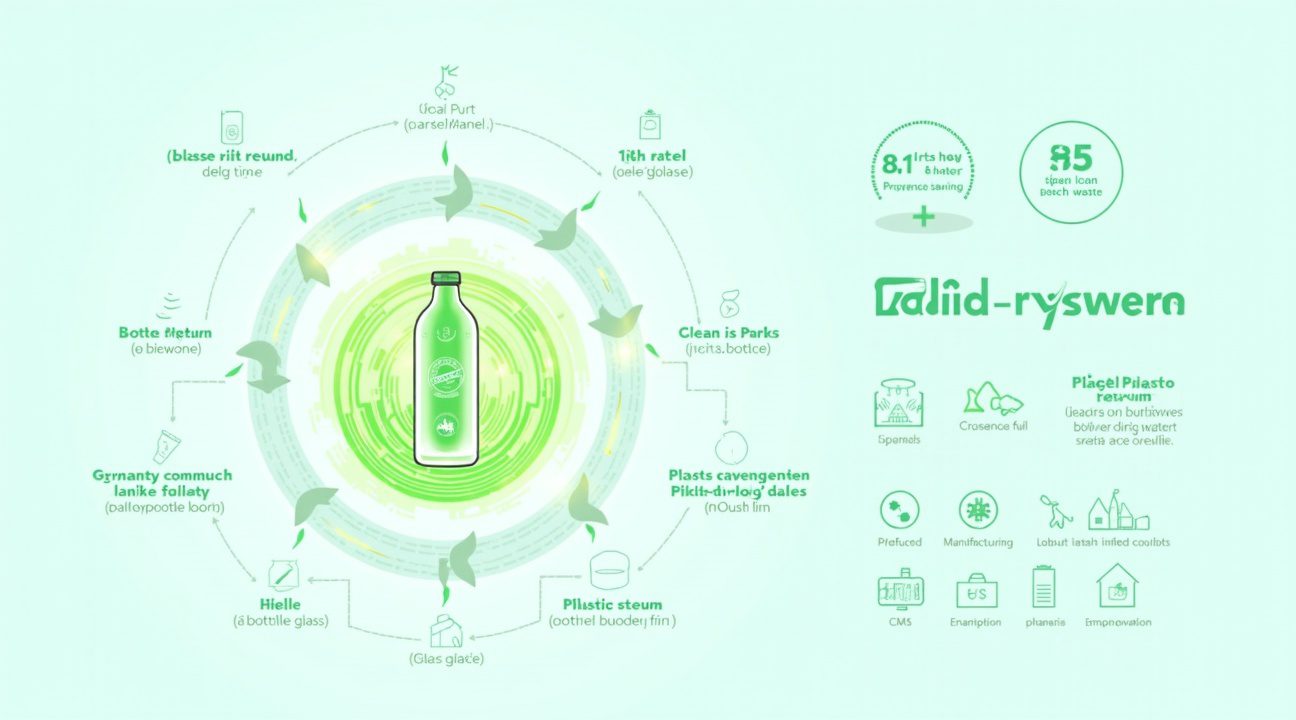
Recent Changes and Future Developments
Germany’s bottle return system has undergone significant transformation in recent years, with lawmakers implementing strategic changes to broaden its environmental impact. The system’s evolution reflects the country’s commitment to reducing waste and promoting sustainable packaging practices across the beverage industry.
Legislative Expansions in Effect
Starting in January 2022, the German government introduced comprehensive changes that brought previously excluded beverage categories under the deposit system. This expansion marked a pivotal moment for environmental policy, extending the reach of bottle returns beyond traditional carbonated drinks and beer. The legislative update addressed gaps that had allowed certain beverage types to bypass the deposit requirement, creating a more uniform approach to packaging waste reduction.
These changes represent Germany’s response to evolving consumer habits and packaging trends. I’ve observed how the system now captures a broader range of products that were once exempt, strengthening the overall effectiveness of the return network. The expansion demonstrates how policy adjustments can adapt to market changes while maintaining the core principles of waste reduction.
Upcoming Changes and Strategic Developments
The system will undergo another significant transformation in 2024 with the inclusion of milk-based beverages sold in single-use plastic bottles. This addition addresses a notable gap in the current framework, ensuring that dairy beverages contribute to the circular economy model that has made Germany’s system so successful.
Perhaps the most striking development involves discussions around dramatically increasing deposit amounts for refillable glass bottles. Industry stakeholders are considering raising the refundable deposit from the current €0.08 to as much as €0.80 per bottle. This tenfold increase would create powerful economic incentives for consumers to choose refillable options over single-use alternatives.
The proposed deposit increase reflects a strategic shift in how Germany approaches packaging waste. By making refillable containers significantly more expensive to discard, the system would encourage consumers to actively participate in the return process. This pricing adjustment could fundamentally alter purchasing decisions, steering consumers away from single-use packaging options.
These developments align with broader European Union directives on packaging waste and circular economy principles. The enhanced deposit structure would position refillable containers as the preferred choice through economic incentives rather than regulatory mandates alone. I anticipate this approach will influence similar policy discussions across other European nations looking to strengthen their own deposit systems.
The strategic pricing adjustments under consideration extend beyond simple cost increases. They represent a sophisticated approach to behavioral economics, using financial incentives to drive environmental outcomes. Higher deposits create tangible value for returned containers, transforming what was once a modest environmental gesture into a meaningful economic transaction.
Germany’s bottle return system continues to serve as a model for other nations, much like how forward-thinking directors influence industry standards. The upcoming changes reflect careful consideration of market dynamics and consumer behavior patterns.
Future developments will likely focus on optimizing the balance between convenience and environmental impact. The system’s administrators are working to ensure that expanded coverage and higher deposits don’t create barriers to participation while maximizing the return rates for both single-use and refillable containers.
These ongoing refinements demonstrate Germany’s commitment to maintaining leadership in sustainable packaging policy. The combination of legislative support and strategic pricing creates a framework that other countries study and adapt for their own environmental initiatives. Each adjustment builds upon decades of experience, creating a more comprehensive and effective system for managing beverage container waste.
Sources:
TOMRA – “Germany’s Effective Deposit Return Scheme Explained”
Packaging Insights – “German Trade Association Calls for Higher Glass Bottle Deposit”
Sensoneo – “Overview and Results of the Deposit Return Schemes in Europe”
Live in Germany – “Pfand System Germany”

